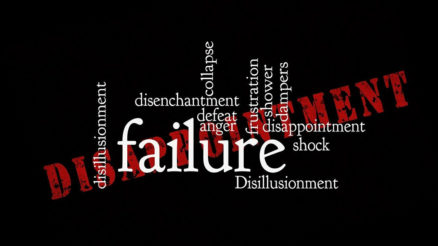In today’s fast-paced digital world, crises can strike unexpectedly, ranging from natural disasters to corporate mishaps.
The ability to effectively manage these crises is crucial for organizations and individuals alike.
And in the age of social media, the role of these platforms in crisis management has become increasingly prominent.
Social media has revolutionized the way information spreads, allowing for real-time updates, two-way communication, and mobilization of support like never before.
In this blog post, we will explore the role of social media in crisis management, highlighting its power, discussing the challenges it presents, and providing best practices for leveraging these platforms effectively during times of crisis.
Let’s learn more about this
The Power of Social Media in Crisis Situations
Do you know that half of American especially young population read news stories through social media platforms.
Social media’s power in crisis situations extends beyond information dissemination. The ability to foster communication and mobilize collective action makes social media an invaluable tool in crisis management.
Here are key aspects of role of social media in crisis management:
Rapid dissemination of information
In times of crisis, one of the most critical aspects is the ability to rapidly disseminate accurate and timely information. This is where social media platforms shine. With their instantaneous nature, social media allows for real-time updates and alerts during a crisis.
Organizations, authorities, and individuals can swiftly share important information such as evacuation notices, safety instructions, and emergency contact details with a wide audience. This immediate and direct communication has the potential to save lives and minimize the impact of the crisis.
Broad reach and potential for virality
Another advantage of social media in crisis management is its ability to reach a broad audience rapidly. With millions of active users across various platforms, the potential for information to go viral is significant.
When a crisis occurs, important updates shared on social media can quickly spread through shares, retweets, and hashtags, reaching far beyond the immediate followers of an organization or individual. This broad reach ensures that critical information reaches as many people as possible, increasing awareness and facilitating the necessary response during a crisis.
Facilitating two-way communication
During a crisis, effective communication is vital not only for providing information but also for addressing concerns and fostering a sense of community. Social media platforms enable two-way communication, allowing organizations and individuals to engage directly with affected individuals and the general public.
It allows affected individuals to share their experiences, seek help, and receive personalized assistance. Through comments, direct messages, or mentions, organizations can respond promptly, providing guidance, support, and empathy to those in need. This direct interaction helps build trust and a sense of connection during challenging times.
Gathering and addressing public concerns and questions
In times of crisis, the public often has numerous concerns and questions. Social media provides a platform for people to voice their concerns, ask questions, and seek clarifications.
Organizations can actively monitor these conversations and engage in dialogue, addressing public concerns and providing accurate information. By actively participating in these discussions, organizations can mitigate misinformation, alleviate anxiety, and demonstrate their commitment to transparency and accountability.
Mobilizing support and resources
Social media platforms play a pivotal role in mobilizing support and resources during a crisis. They provide a powerful mechanism for crowdsourcing assistance, donations, and coordinating volunteer efforts.
Through compelling stories, images, and videos, organizations can harness the power of social media to mobilize the public, encouraging them to contribute to relief efforts. The ease of sharing and the potential for posts to go viral make social media an effective tool for garnering widespread support and donations from individuals and organizations alike.
Coordinating volunteer efforts
In times of crisis, there is often a surge in individuals willing to volunteer their time, skills, and resources. Social media platforms serve as a hub for coordinating and organizing volunteer efforts. Organizations can create dedicated groups, events, or hashtags to connect volunteers with specific needs or relief initiatives. This enables individuals to find opportunities to contribute, collaborate with like-minded individuals, and make a meaningful impact within their communities.
Challenges and Risks in Social Media Crisis Management
Managing misinformation and rumors
One of the significant challenges in social media crisis management is the proliferation of misinformation and rumors. During crises, false information can spread rapidly, leading to panic, confusion, and potential harm. It is essential to address this challenge effectively to maintain public trust and provide accurate information.
Impact of false information during crises
False information circulating on social media platforms can undermine the effectiveness of crisis response efforts. It can misguide affected individuals, hinder rescue operations, and create unnecessary fear and anxiety. Moreover, misinformation can strain resources and divert attention from critical tasks by generating unnecessary inquiries or actions.
Maintaining control and managing public sentiment
Maintaining control over the narrative and managing public sentiment during a crisis can be challenging in the realm of social media. It is crucial to strike a balance between transparency and maintaining public trust while addressing negative sentiment and online backlash effectively.
Best Practices for Effective Social Media Crisis Management
Following are some of the best practices taken from experiences of different corporate and public organizations using social media in crisis management.
Establishing a social media crisis communication plan
A social media crisis communication plan is a strategic document that outlines the organization’s approach to managing and responding to crises through social media channels. It serves as a blueprint for how the organization will handle and address crisis situations in the online space. The plan includes key elements such as roles and responsibilities, communication protocols, messaging guidelines, monitoring and engagement strategies, and coordination with stakeholders.
It aims to ensure a proactive and coordinated response, maintain transparency, address public concerns, and protect the organization’s reputation during a crisis. The plan is typically developed in advance to be well-prepared for potential crisis scenarios and is regularly reviewed and updated to reflect changing circumstances and emerging trends in social media communication
Creating pre-approved messaging and protocols
Develop pre-approved crisis messaging templates and protocols that align with your organization’s values and priorities. These templates should cover various scenarios and ensure that responses are consistent, accurate, and empathetic. Pre-approval allows for quick deployment of messaging during a crisis, minimizing delays and potential miscommunication.
Monitoring social media channels
Active monitoring of social media channels is essential to stay informed, identify emerging issues, and understand public sentiment. Utilize social listening tools to monitor mentions, keywords, hashtags, and relevant conversations across social media platforms. These tools can help you track real-time updates, identify trending topics, and gauge public sentiment. Monitor not only your official channels but also wider social media discussions related to the crisis.
Regularly track and analyze mentions and hashtags associated with the crisis. Monitor sentiment analysis to gauge public perceptions and identify potential issues or concerns. This information will help you better understand the evolving narrative, make data-driven decisions, and respond appropriately.
Engaging with the public
Engaging with the public on social media during a crisis is vital to maintain trust, provide accurate information, and address concerns effectively.
Respond promptly to queries, comments, and messages from the public. Acknowledge their concerns and provide empathetic and helpful responses. Timely and compassionate communication helps build rapport, demonstrate transparency, and alleviate anxiety.
Regular updates and factual information
Share regular updates with accurate and verified information. Communicate important developments, changes in the situation, and any necessary instructions or precautions. Provide links to official sources or references for further information. Avoid speculation or sharing unverified information that may contribute to misinformation.
Coordinating with traditional media and stakeholders
Use social media platforms to establish connections and maintain open lines of communication with journalists and media outlets. Share press releases, statements, and updates on social media to ensure journalists have access to timely and accurate information. Monitor media coverage and address any inaccuracies or misinterpretations promptly.
Coordinate efforts with relevant organizations, authorities, and stakeholders involved in the crisis response. Share information, coordinate messaging, and leverage each other’s resources and expertise. Collaborative efforts help ensure a unified and effective response, avoid duplication of efforts, and maximize impact.
Social Media Crisis Communication Example
The textbook example of social media crisis communication is the case of Pepsi’s controversial advertisement featuring Kendall Jenner in 2017. The ad depicted Kendall Jenner participating in a protest and offering a can of Pepsi to a police officer, suggesting that a can of soda could solve social and political tensions. The ad received widespread backlash and criticism for trivializing serious social issues.
In response to the crisis, Pepsi utilized social media as a key communication channel to address the controversy. The following actions were observed:
- Swift Response: Pepsi promptly acknowledged the issue and publicly apologized for the ad on social media platforms, expressing regret for any offense caused.
- Transparency and Ownership: The company took ownership of the mistake and admitted that the ad missed the mark in understanding the complexity of the issues it attempted to address. This transparent admission demonstrated accountability.
- Direct Engagement: Pepsi engaged directly with individuals expressing their concerns and frustrations on social media. They responded to comments, messages, and tweets, attempting to address specific criticisms and apologize individually where necessary.
- Temporary Pause in Advertising: Pepsi temporarily halted the advertising campaign and removed the controversial ad from circulation to prevent further damage and allow time for reflection and reevaluation of their messaging.
- Learning and Improvement: Pepsi used the crisis as an opportunity to learn from their mistake. They conducted internal reviews and implemented measures to ensure better sensitivity and understanding in future marketing campaigns.
Through their social media crisis communication efforts, Pepsi attempted to address the situation by being responsive, transparent, and empathetic. While the incident had a negative impact on the brand initially, their proactive approach and willingness to learn from the experience helped to mitigate some of the backlash over time.
If you want to further read about Pepsi crisis management case study then do check out this.
Final Words
The role of social media in crisis management cannot be overstated. It has the power to disseminate information rapidly, engage with affected individuals, mobilize support, and address public concerns. However, utilizing social media effectively during a crisis requires careful planning, proactive measures, and the ability to adapt to evolving situations. However, challenges and risks exist in social media crisis management, such as managing misinformation, maintaining control, and addressing privacy and ethical considerations. Organizations must implement strategies to combat false information, balance transparency with public trust, and ensure responsible use of social media platforms.



